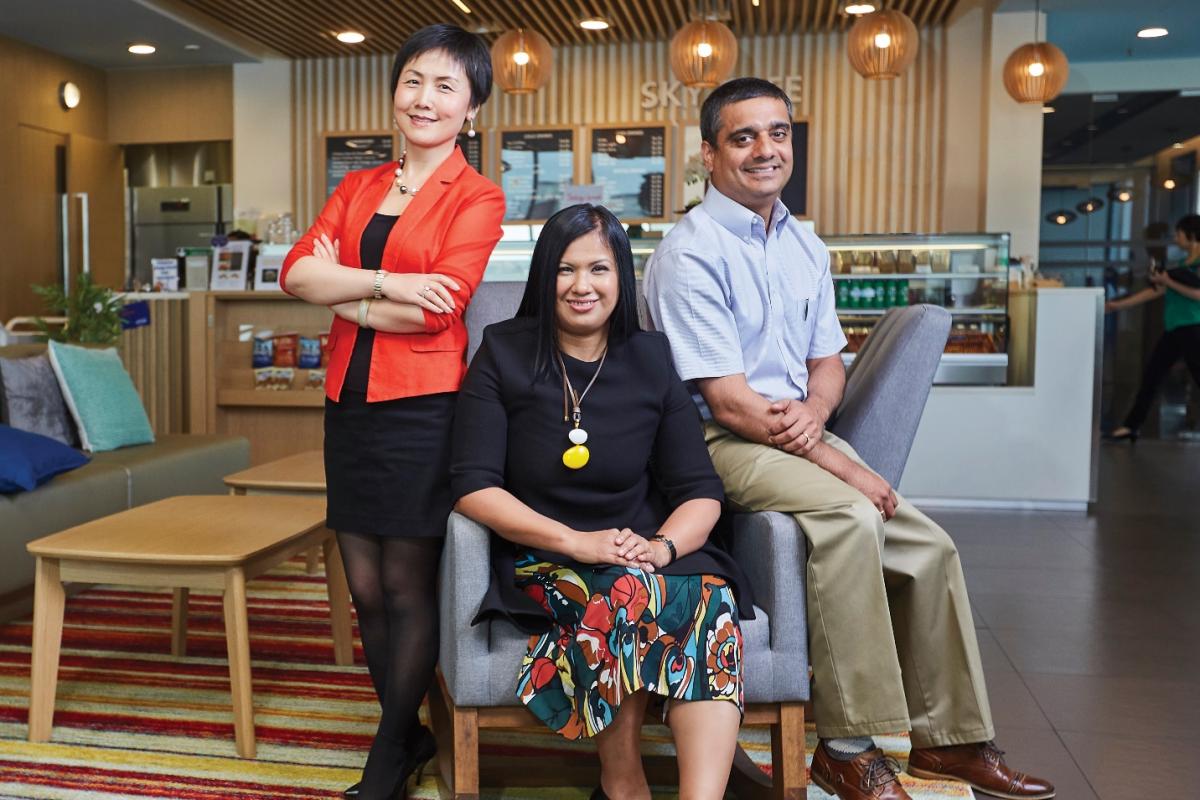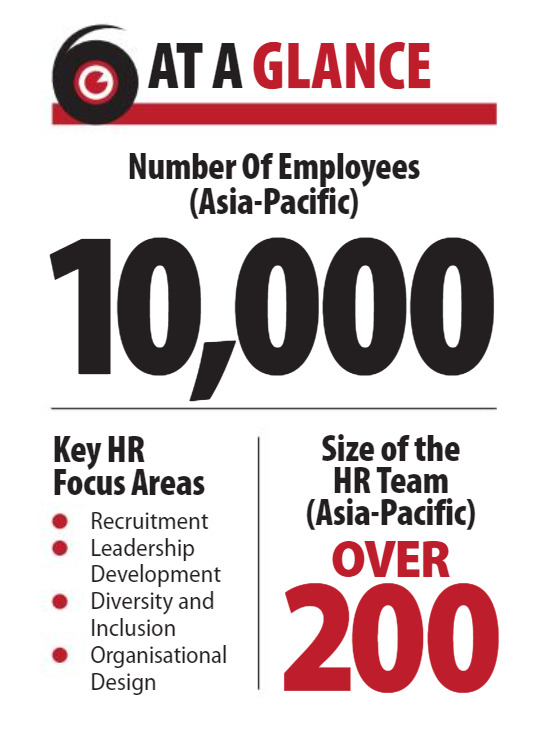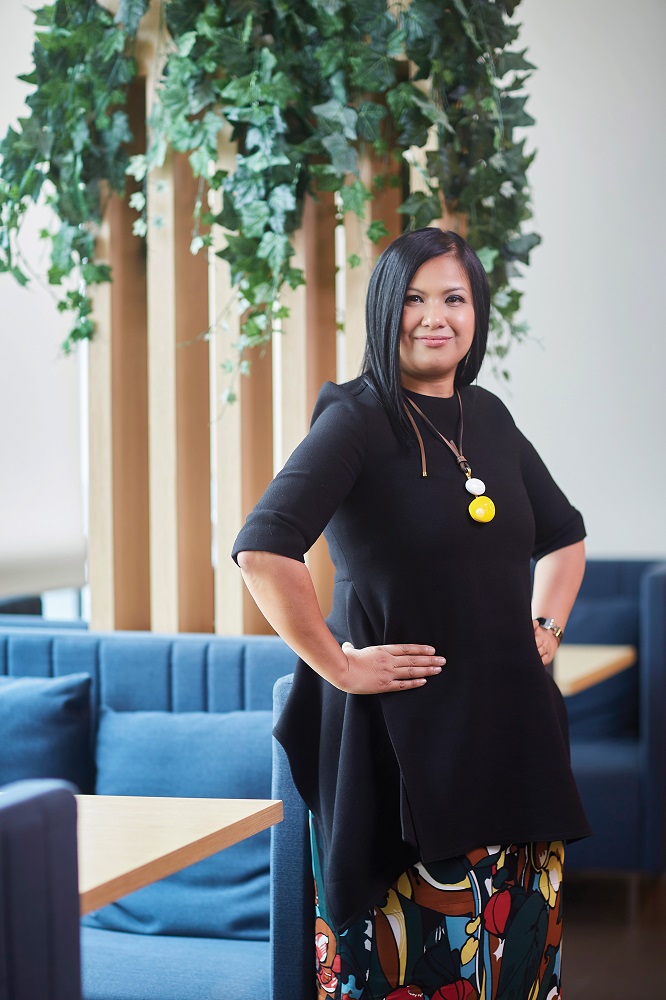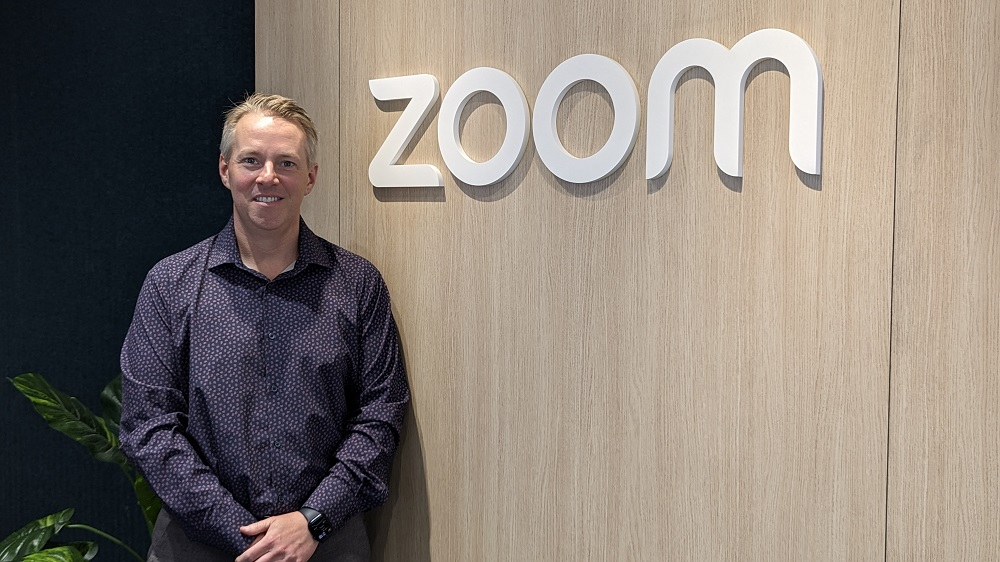Procter & Gamble: Building from within
HR Insider is a regular in-depth feature exploring the people management teams of some of the region’s most prolific organisations.

Hiring entry-level positions exclusively is a move most companies would shy away from. But that’s not the case for consumer goods corporation Procter & Gamble (P&G), where around 90% of all its hires globally are for junior roles.
As one of the largest employers in the world (as of June this year, it had a headcount of 95,000 workers), and an organisation which owns such recognisable brands as Pantene, Olay, Gillette, and SKII, it’s understandable why this staffing approach could be seen as risky.
That’s because hiring mostly rookies naturally means a lot of training and development is needed to get them up to speed, which is both costly and time-sapping.
But as Vinitaa Jayson, Vice President of HR for P&G Asia, shares, that is hardly a concern. Rather, the company is a firm believer in leadership development and “building its future leaders from within”.
“Leadership development is not only HR’s bread and butter, but for the organisation as a whole,” says Jayson.
From intern to CEO
This focus on developing its people is most evident in how almost every person on the Asia-Pacific executive board of directors started their P&G careers at the very bottom of the organisation.
“We hope each time when we hire an individual, that they might end up one of the presidents or CEOs of the organisation – because that’s how each of our CEOs have started,” says Jayson.
Jayson, herself, stepped foot into P&G’s India business as the Associate Manager of Compensation & Benefits in 1995, She has not seen the inside of another organisation since, thanks to the company’s robust leadership development programmes and meticulous career-planning frameworks.
Over the years, the Asia HR head was able to rise up the ranks while being attached to various business units across the world, from Manila in the Philippines, to Cincinnati and Boston in the US.
Throughout her 22 years at P&G, she has been able to not only hone her skills in a multitude of HR areas, but also directly impact business outcomes.
Jayson recalls her time at the head office in Cincinnati, during which she wore the hat of HR leader for the beauty and grooming business. This was in 2007, and the team was concerting its efforts on the iconic skincare brand Olay.
“The team was focused on launching a new product, and I was part of the team that helped in teambuilding and strategy and so on. When I saw the final product on the shelves, I felt really good because I was very much a part of building it,” she says.
This sense of ownership and high level of involvement is indeed one of the main benefits of the organisation’s well-established hire, develop, and promote model.
Where most organisations would be daunted by having to fill such a huge talent pipeline, let alone following that up with well-structured career development and succession planning frameworks, this is not viewed as a challenge for P&G leaders. Rather, it is an “ongoing opportunity” for the business.
“It is an ongoing opportunity for us because it allows us to constantly find and attract the best talent to fill our large pipeline,” says Jayson.
Elaborate recruitment
This massive undertaking would be near-impossible if not for the fact that HR devotes a great amount of resources, and leadership attention, to recruitment. It is why the company is notorious for having one of the most elaborate and toughest screening processes today.
Jayson breaks down the rigorous selection into three phases.
At the initial stage, there is a series of “very well-qualified quantitative tests”, designed by industrial and organisational psychologists that assess candidates on their characteristics, leadership qualities and aptitudes. These are online multiple choice questionnaires aimed at measuring basic skills and abilities that generally do not emerge from interviews.
Once candidates have passed this first round, they then have to undergo a behavioural-based and situational interview, where they are asked about previous accomplishments or how they might handle certain situations in the future.
If they demonstrate the right behaviours, awaiting them in the next stage is a series of much more intense and comprehensive interviews with a diverse set of leaders probing for key characteristics.
With so many candidates applying for roles each year, P&G knows that a large number of applicants will not make it to the finish line. Last year, the company received over 140,000 job applications across the Asia-Pacific region, hiring only 600. If they are to stumble at the first hurdle, they will only be allowed to sit for another assessment test after 12 months.
P&G continues to stand firm in its extensive hiring process, even as other businesses prioritise speed of hiring over quality of talent and organisational fit. Jayson says there is a method to its madness.
“Our hiring process has been honed over generations, and has been effective at helping us find the type of talent we want,” she says.
The layers of candidate screening, Jayson explains, have been based on extensive research with the aim of understanding what P&G people do when they’re at their best. “It looked at the characteristics that have historically driven growth in the company, as well as at external and business trends shaping the marketplace.”
The findings were then distilled into three basic ideas that are used as judging criteria during all stages of recruitment: the personality traits of purpose, values and principles.
These, Jayson emphasises, are mainly about integrity. They speak to the more subtle aspects of integrity that really reflect a person’s character: the ability to build trust by being open, honest, straightforward and candid, she says.
“Our purpose, values and principles form our culture, and this culture is our secret sauce.”
 Social media engagement
Social media engagement
As exacting, or even as tedious, as the qualifying process sounds, P&G consistently attracts hundreds of thousands of job applicants each year – that’s both here in Asia and around the world.
The sheer volume of applicants means recruitment is not only HR’s lookout, but that of every employee as well. “Really, all our employees are our top ambassadors. Recruitment is not only done by HR,” says Jayson, adding that the function today primarily leads the strategy and builds the framework necessary for making good hires.
“We expect everyone in the company, including our CEOs, to go out and hire.”
In line with this inclusive style, HR has helped to design and introduce a number of alternative recruitment channels, including school outreach, unique competition-style internships, and social media platforms.
Engagement with top universities, account for most of P&G’s avenues to hire here in Asia. This is managed by “School Teams”, filled with full-time employees who are usually alumni of a particular institution. It is a tool that has proven particularly effective, since most of the company’s targeted pipeline are fresh graduates.
Besides marketing, these School Teams also have the power to screen and hire talent directly into their own business units and product divisions.
The P&G CEO Challenge, an annual two-day competitive internship programme, is another key mode through which the organisation finds potential talent.
The programme sees participants act, think, and learn to make business decisions like a CEO or other senior leadership role across brand management, sales, strategy, finance, and other functions, all while being coached by P&G mentors.
They then have to apply these lessons into a given case study at the end of the two days. Some 500 university undergraduates are selected at the start for the programme each year, before 40 to 50 of the top performers are shortlisted for a traditional internship, or to be hired permanently.
“There is a lot of interest from students for the CEO Challenge because they are also looking for innovative companies to join,” says Jayson. “And we respect that and welcome them to do that.”
While social media is not used as a direct hiring platform, it is a highly effective marketing and engagement tool. LinkedIn and Facebook are two social media avenues Jayson says P&G invests heavily in.
And the results speak for themselves. There were 1.6 million click-throughs to the P&G career page in 2016 from LinkedIn, while Facebook campaigns cumulatively found an audience reach of 3.1 million individuals.
In China, the company employs WeChat widely to engage with local students. One of its recent online seminars on the platform garnered some 780 million viewers.
While other companies might not use social media as extensively as P&G, digital engagement is key for an organisation whose target hires are mostly still in school.
“If you are hiring mid-career people from other companies, you don’t have to create whole sets of engagement based on the newest technology, but we do because of how young these hires are,” Jayson says.
“How you engage them, even in the hiring process, is pivotal. In the past, you could just do interviews and they would already be happy to join you. Now it’s a two-way process – they’re also evaluating you.”
Precise placements
But the most pivotal part of the employee experience begins when job applicants first become employees.
That’s because P&G spends a lot of time thinking about how it can develop its people to become future leaders of the company from the outset – a fact Jayson iterates several times.
“We put in the same amount of insights and innovation into our people as we do with our brands,” she says.
“Our leadership pipeline is just as important as our innovation pipeline, because businesses require different types of skill sets at each point.”
The first thing P&G does is it promises every new hire a meaningful career at the company. What this means is the company carefully studies the strengths, weaknesses and interests of each individual, alongside the business’ needs, before placing them in the most suitable and exciting assignment.
Jayson says this first assignment is extremely crucial because it will either “strengthen or weaken the bond” the employee has with the company.
“The alternative for them is a fun start-up, so we have to show them that working for a big corporate entity is just as exciting.”
This matching and planning of roles, however, does not only happen when employees first join, but also takes place throughout their lifespan at the company.
Employees are given the opportunity to join short-term (three to six months) project teams and sent for international assignments that last a few years. For the capable ones, they are even tasked to take on crucible assignments (or stretch roles).
Jayson says these placements are often tough, and sometimes risky, but P&G understands that they help employees grow their skillsets.
Developing future leaders
To be selected as a high-potential talent in P&G is an exciting prospect. The company identifies these future leaders based on performance and results, and how well employees transfer their results from one assignment and business unit to another.
Potential leaders are also scored on their EQ, and how they deliver outcomes.
Very rarely does the company hire a senior executive externally, without first giving the opportunity to existing employees. This is its “build from within” philosophy in action, which Jayson says staff appreciate.
“It does give a lot of transparency to employees that they have a fair chance of progressing in their careers here,” she says.
The virtual P&G Leadership Academy, run by the heads of each country office, is then where budding senior executives and existing directors alike log on to undergo courses and modules that build their leadership skills.
This learn and grow stance has served P&G well for generations. Last year, Universum ranked it as the top fast moving consumer goods company in Asia.
“Employees here don’t sit on the sidelines. We empower them to go head-on into the business independently,” states Jayson.
“We provide them with very challenging and meaningful roles. The fact that they get these very diverse experiences without ever having to send out a résumé is why many will stay on with us.”
HR Insider is a regular in-depth feature exploring the people management teams of some of the region’s most prolific organisations.




